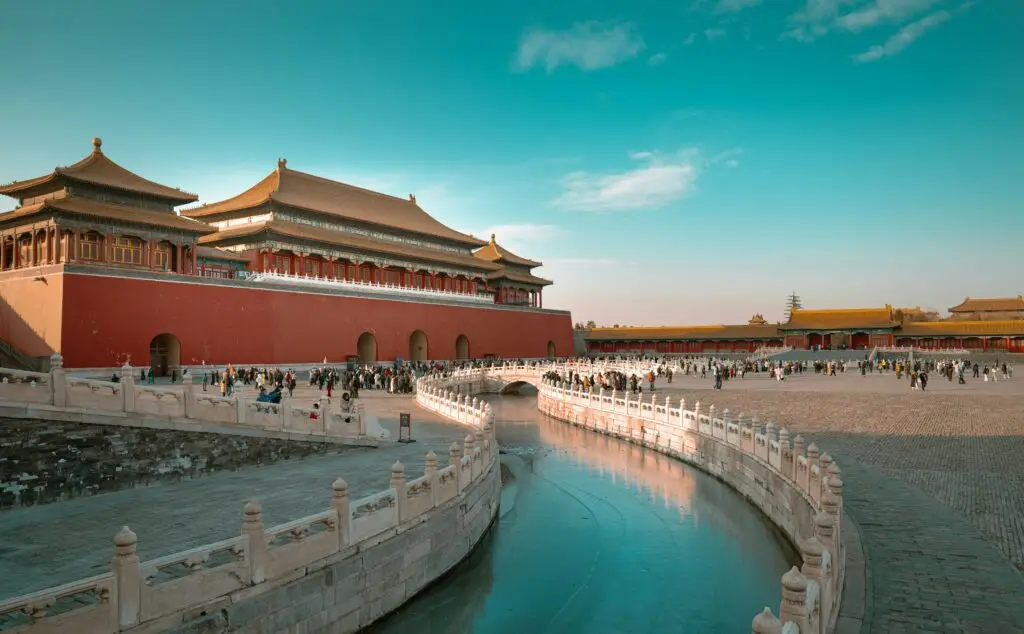Beijing: Where Imperial Grandeur Meets Everyday Life
Beijing isn’t a city you simply “visit”—it’s a city that wraps you in layers of history, power, and energy. From the moment I stepped onto its broad avenues, framed by old plane trees and guarded by ancient gates, I could feel the weight of centuries pressing gently against the rhythm of modern life.
This is the heart of China’s political and cultural history. For over 800 years, Beijing has been the seat of emperors, the stage for revolutions, and now the pulse of a fast-changing nation. But behind its monumental scale lie quiet courtyards, steaming bowls of noodles, and pockets of daily life that make it feel human and alive.
The Forbidden City – A Walk Through Power and Silence
Standing before the Meridian Gate of the Forbidden City, I felt both dwarfed and drawn in. The red walls seemed endless, their color deep and warm under the winter sun. Inside, the courtyards unfolded like chapters in a novel—each hall bigger, higher, and more ornate than the last.
The symmetry, the carved marble bridges, the dragon motifs—everything spoke of control and grandeur. Yet it wasn’t the size that stayed with me, but the quiet. Even with tourists around, there were moments when the wind through the eaves was the loudest sound, and I could imagine what it must have felt like for an emperor to walk here alone, ruling an empire from behind these walls.
Advice: Buy tickets online in advance—entry is capped daily. Try to go early in the morning when the light is softer and the crowds are smaller.
The Great Wall – Standing on the Spine of a Nation
An hour’s drive from the city brought me to Mutianyu, one of the best-preserved sections of the Great Wall. The climb up was steep, my legs burning, but when I stepped onto the Wall itself, everything else faded.
The stones under my hands were cold and rough, the mountains stretching endlessly in shades of green and brown. The wall snaked away into the distance, disappearing and reappearing over ridges like a giant dragon. I stood still for a while, the wind strong on my face, feeling both incredibly small and deeply connected to history.
Advice: Mutianyu is less crowded than Badaling and has easier access for visitors. Wear comfortable shoes—stairs here can be steep and uneven.
Temple of Heaven – Where Sky Meets Earth
The Temple of Heaven isn’t just an architectural marvel; it’s also a living park. I arrived early and saw locals playing tai chi, practicing traditional music, and chatting in small groups. The Hall of Prayer for Good Harvests stood tall and graceful, its blue-tiled roof gleaming in the morning sun.
There’s a serenity here that makes you slow your pace. Standing at the Echo Wall, I whispered a few words just to see if the sound would carry—a playful reminder that Beijing’s monuments are as much about human connection as they are about stone and wood.
Advice: Visit in the early morning to see locals exercising—it’s one of the most authentic glimpses of Beijing life you’ll find.
Hutongs – The Soul of Old Beijing
Away from the grand avenues, the hutongs—narrow alleyways lined with traditional courtyard houses—show a different side of Beijing. Here, bicycles lean against gray brick walls, neighbors chat across doorways, and the smell of fried dumplings floats through the air.
I stopped at a small shop for zhajiangmian—noodles topped with a rich soybean paste and fresh vegetables. Sitting on a low stool, I watched life unfold slowly around me. This felt like the heartbeat of the city—intimate, unpolished, and enduring.
Advice: Take a guided hutong walking or cycling tour; many residents are happy to share stories of their homes and families.
Personal Reflection
Beijing gave me a constant sense of scale—not just in architecture, but in time. It’s a city that makes you feel small in front of its history, yet warmly invited into its daily life. I left with the memory of red walls glowing at sunset, the sound of wind over the Great Wall, and the taste of street food eaten in a hidden alley.
Practical Tips for Traveling in Beijing
Best Time to Visit: Spring (April–May) and autumn (September–October) offer pleasant weather and clear skies.
Getting Around: The subway is cheap, fast, and easy for non-Mandarin speakers. Avoid rush hour if possible.
Tickets: Popular sites like the Forbidden City and Summer Palace require advance booking.
Food Safety: Street food is generally safe in busy areas—look for stalls with high turnover.
Cashless Payments: Most places prefer mobile payments (WeChat Pay, Alipay), but larger venues accept foreign cards.
Dress in Layers: Weather can change quickly, especially in spring and autumn.
Final Thought:
Beijing is not just China’s capital—it’s a city where history and the present share the same streets. You can stand on stones laid centuries ago in the morning, and sip coffee in a trendy art district by afternoon. It’s a place that demands both your attention and your imagination.

